Skewen flood: Is Wales' coalmining past behind home evacuations?
- Published
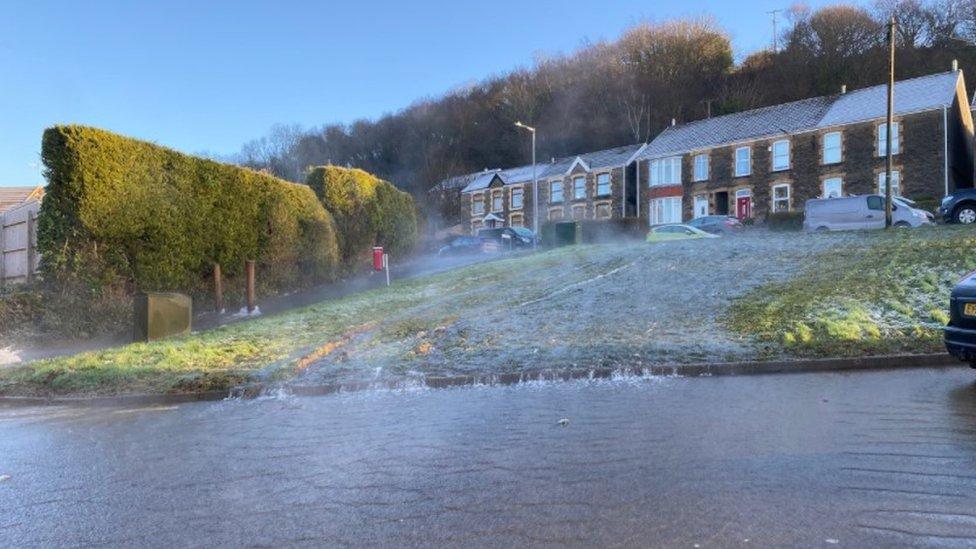
The water is warmer than the air and is creating a mist along Dynevor Road
The coalmining heritage of Wales has been implicated in flooding of homes - but what has happened in Skewen?
About 80 people were evacuated from the Neath Port Talbot village, with at least eight streets left under water.
Council leader Rob Jones says the flood appears to be related to mine works - but the volume of water involved has hampered a full assessment so far.
The Coal Authority is investigating how "historic underground mining features" in the area exacerbated the problem.
A geologist says there are tens of thousands of old mine shafts across the former south Wales coalfield and it is "incredibly difficult" to monitor them all.
Skewen lies within an old coal mining hotspot, with several former colliery sites near the village that operated in the 19th and early 20th Century.
There were colliery sites near what is now Drummau Road, in the north of the village and another close to Old Road, near Neath Abbey.

Skewen was part of a collection of collieries that stretched between Neath and Llanelli on the western side of south Wales' coalfield.
Graham Levins, secretary of the Welsh Mines Preservation Trust, said old mines often contain groundwater which can flood in heavy rain.
He said: "A lot of them go very, very deep down, much below the local water level and that's why they had all the big wheels to pump the water out.
"It fills up with water and will find a way out. Normally rainfall you get it doesn't cause a lot of problems but when you get really heavy rain, the water drains down through the ground and builds up."

Streets were turned into rivers in Skewen
Geologist Tom Backhouse said water was coming out of an area near the junction of Goshen Park and Drummau Road, where there is a record of a mine shaft dating from the turn of the 20th Century.
It then started "rushing down" Drummau Road, causing the flooding that forced evacuations.
"What we can expect to have happened is that the water level in the mines rose to a point where it's burst out of that entry point from the mine workings below.
"Also, there are images of very ochre like orange-coloured water and again, that may well be issuing from the mine workings on the highlands to the east of the property on the hill behind.
"That may be where the shallow workings have flooded."
He said old mine working across the former coalfield area hold water at a certain depth, but when an event such as Storm Christoph drops "a huge amount in a small area", the levels rise quickly.

"As it gets closer and closer to the surface, it basically looks for an escape, the pressure builds up," he continued.
"What it looks like has happened on the junction of Goshen Park and Drummau Road, where the mine shaft is recorded, is that pressure has built up at that point and then burst out through the shaft which is very likely to have been capped with wood or something like that.
"Where you've got those mine shafts, which ultimately are vertical tunnels down into the mine workings below, the water has literally forced itself up through that shaft, and the pressure is obviously so great it's caused this devastating flash flood."
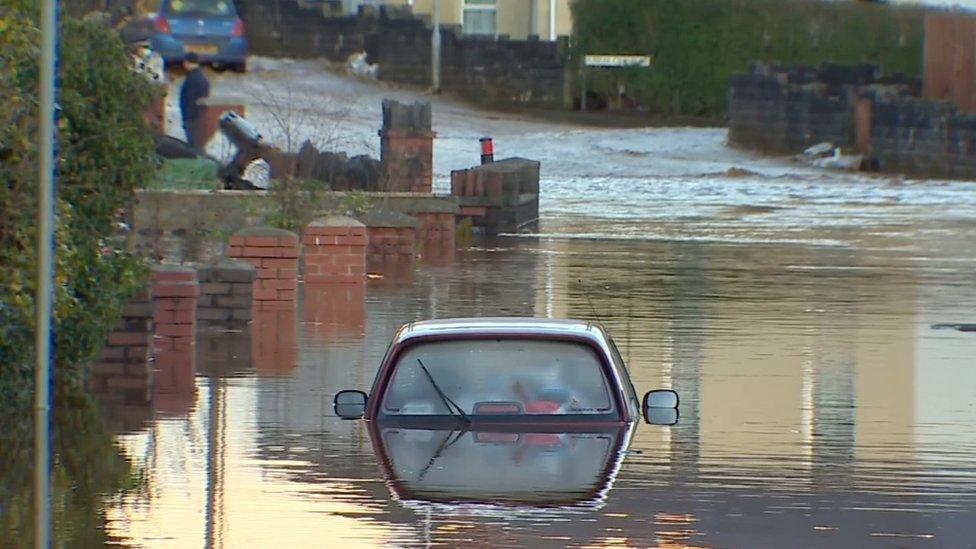
As well as properties, vehicles were submerged in water
There are about 13 shafts recorded within about 820ft (250m) of the one in Goshen Park, so Mr Backhouse said it is possible more than one may have burst.
There are tens of thousands in south Wales and he said it was "incredibly difficult" to check them all, but there were "tell tale signs" as to why they may collapse such as age or what type of developments are around them.
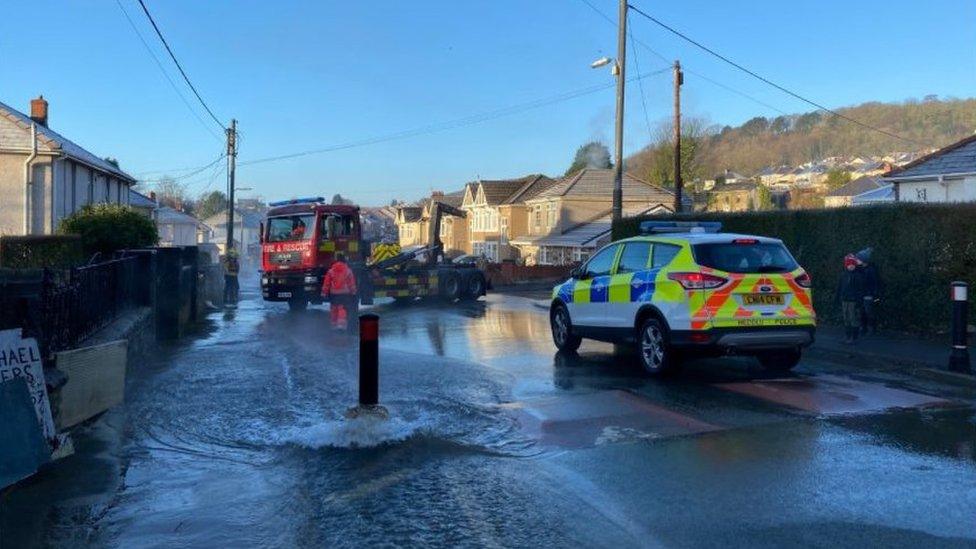
The clean up has continued on Friday morning
"Not to try and fear-monger or anything but of course this sort of thing can happen again," he said.
"If another event like Storm Christoph happens, the water levels in the mine rises as quickly as it did, there's absolutely nothing to say that it wouldn't happen again in the future.
"And obviously as climate changes and we have many more events like Storm Christoph, they are going to increase in frequency, they are going to be much more severe.
"The Coal Authority will have to consider the risk in places like Skewen, and they'll have to understand how it will affect residents and proactively manage that and look at how to reduce the risks for residents."
Related topics
- Published21 January 2021
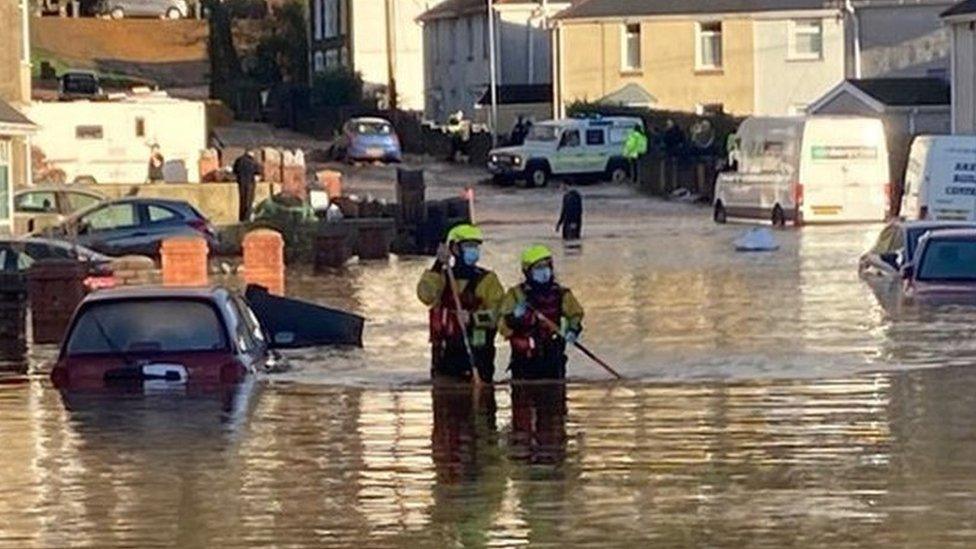
- Published21 January 2021
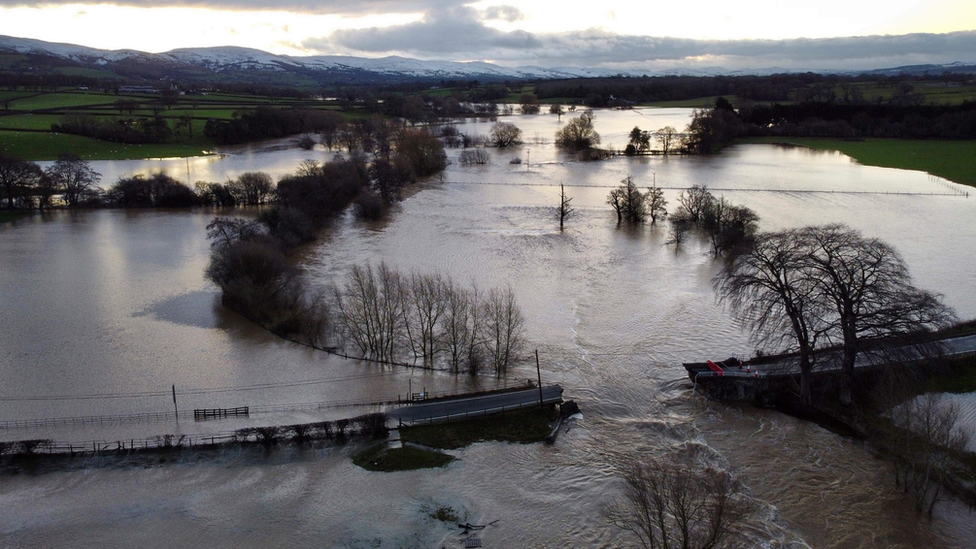
- Published21 January 2021
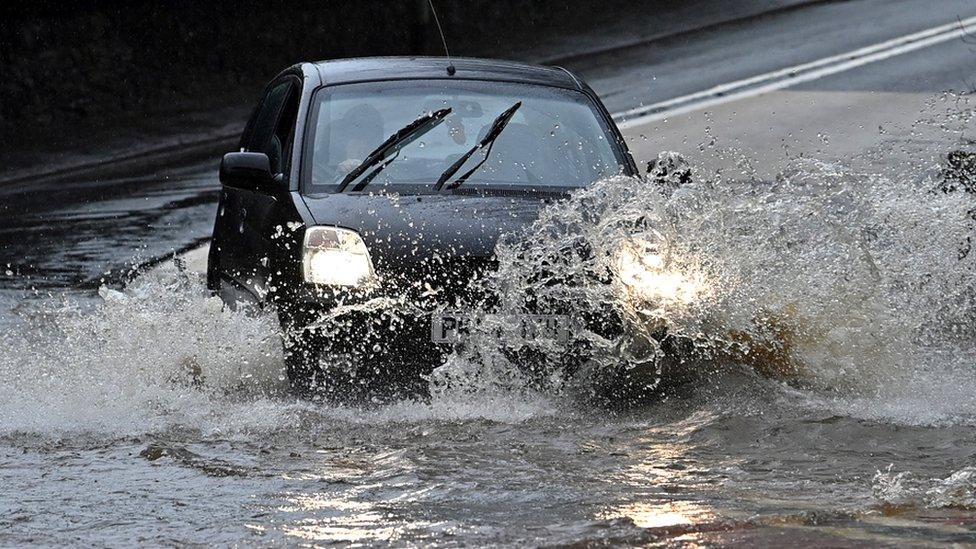
- Published22 February 2022
